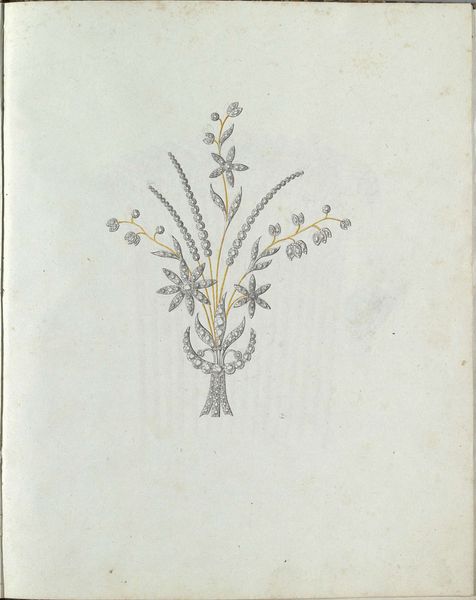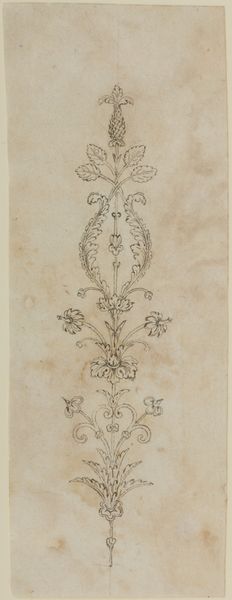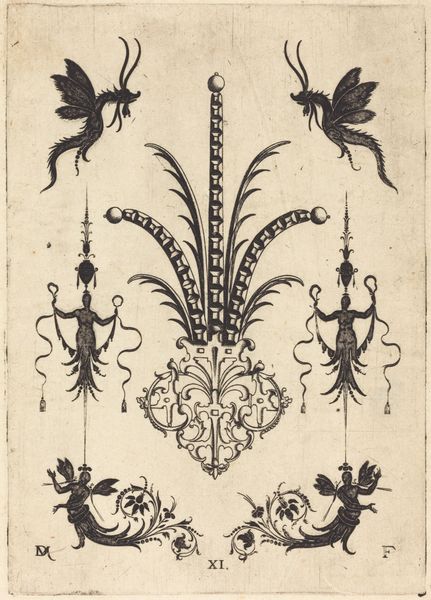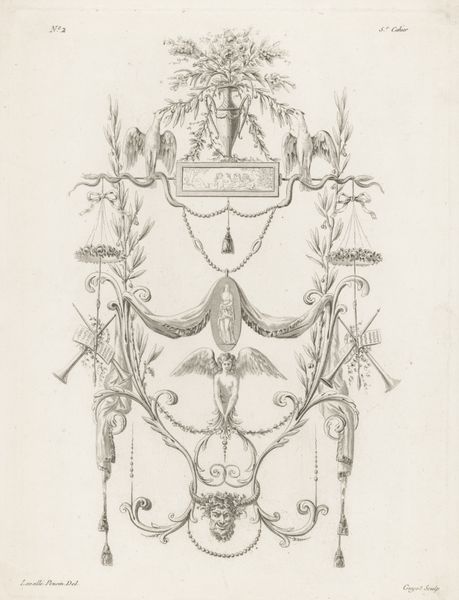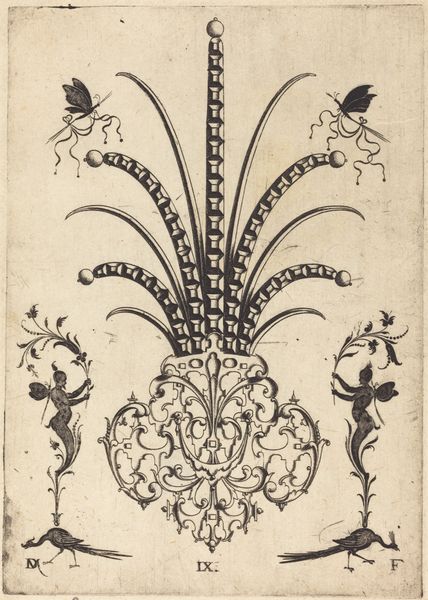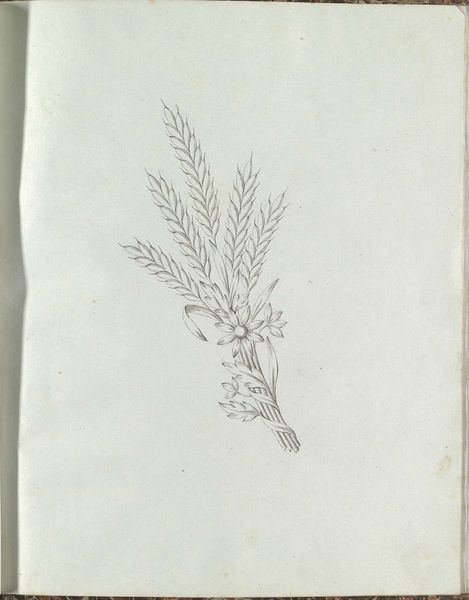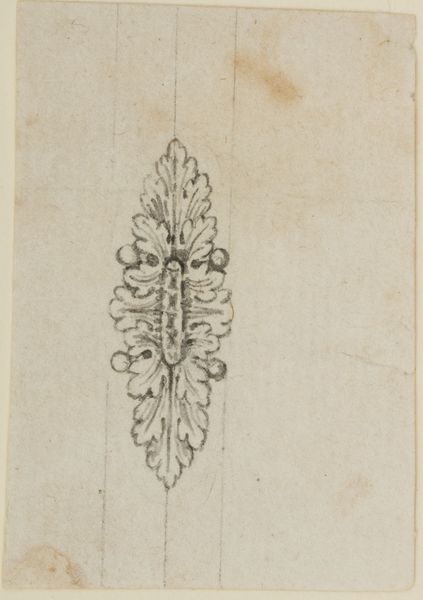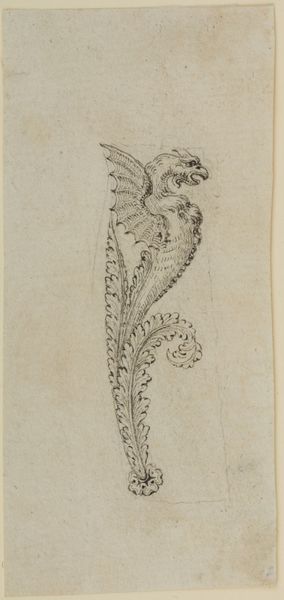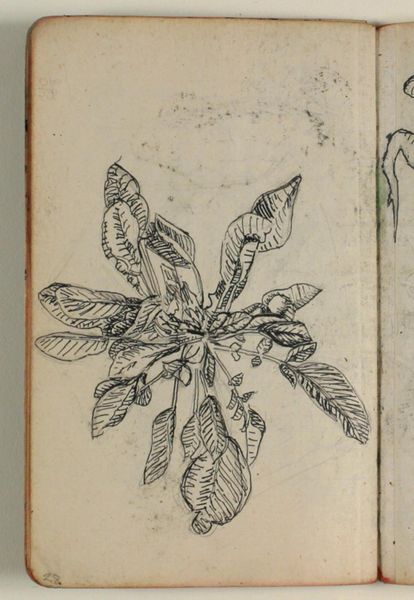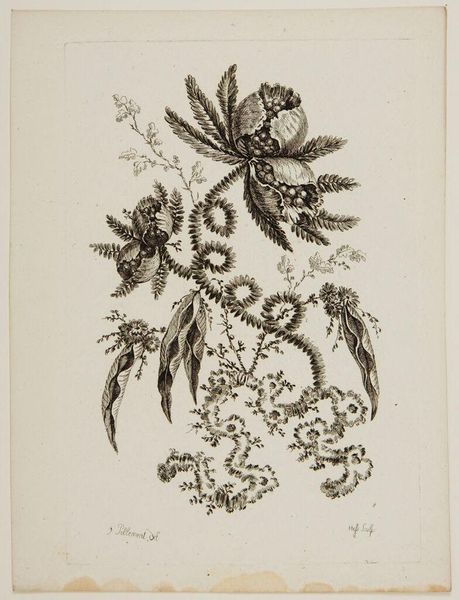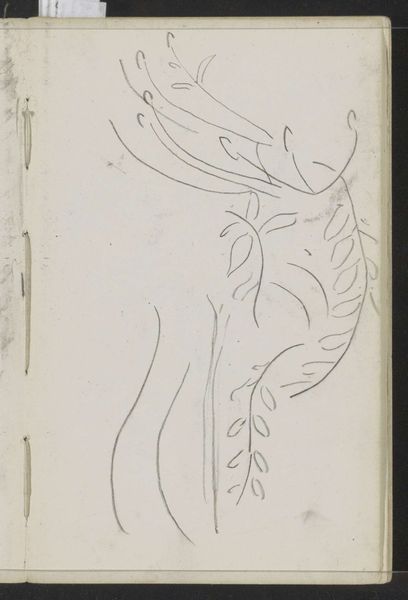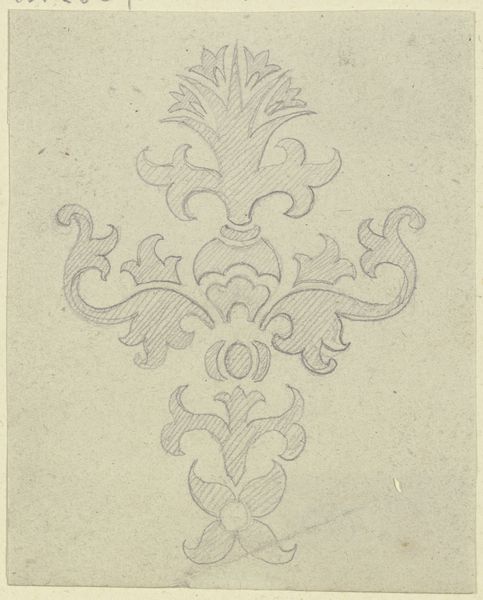
drawing, paper, pen
#
drawing
#
neoclacissism
#
pen sketch
#
paper
#
geometric
#
line
#
pen
#
decorative-art
Dimensions: height 220 mm, width 178 mm
Copyright: Rijks Museum: Open Domain
Curator: Ah, here we have a tantalizing glimpse into the world of Neoclassical design. This pen and ink drawing on paper, dating from around 1800 to 1810, is titled "Ontwerp voor een juweel in de vorm van een boeket" – Design for a jewel in the form of a bouquet, by Carl Friedrich Bärthel. Editor: It's fascinating how delicate it is. The grey ink lends it this ethereal quality, like a faded memory. You almost expect it to shimmer, as if the jewel it represents is real. Curator: Absolutely. Bärthel masterfully employs line work to create a sense of depth and texture, despite the limited tonal range. There is this remarkable attention to detail, almost scientific. The cascading arrangement of the jewels is balanced with geometrical motifs—symmetrical but not entirely predictable. This echoes a period enamored with classical order while simultaneously fascinated by novelty. Editor: Right, but the "novelty" comes with baggage. The geometric is clearly used to idealize the form, suppressing organic irregularity that might otherwise resist easy classification and subsequent objectification. You see that same kind of imperialist urge to dominate, classify, and possess reflected in colonial botanical drawings, doesn’t it? It's not just about aesthetics; it's about power and extraction. I mean, imagine the resources—natural and human—required to realize this design. Curator: That's a very valid point. The jewels themselves would likely be sourced through exploitative colonial systems. And perhaps that ribbon around the base hints at an act of binding the land from which they came. Nevertheless, I think it captures a particularly intense mood of both controlled restraint and a wish to convey a certain magnificence and wealth in that era. The arrangement feels very formal and intentional. Editor: Wealth definitely has a starring role in that mood. The piece is undeniably beautiful. And unsettling! The bouquet, idealized as static, jeweled forms, offers this glimpse into a system. These gems symbolize a desire to control and exploit, reflecting the imperial designs of that era. Curator: Looking at this, I’m struck by the enduring appeal of beauty, even when its origins are ethically complex. It begs the question—how do we reconcile this fascination with the awareness of the socio-political frameworks from which these artworks have been created? Editor: Yes, precisely. I think that acknowledging that contradiction is how we move forward and stay sensitive to it as something worthy of debate and transformation.
Comments
No comments
Be the first to comment and join the conversation on the ultimate creative platform.
